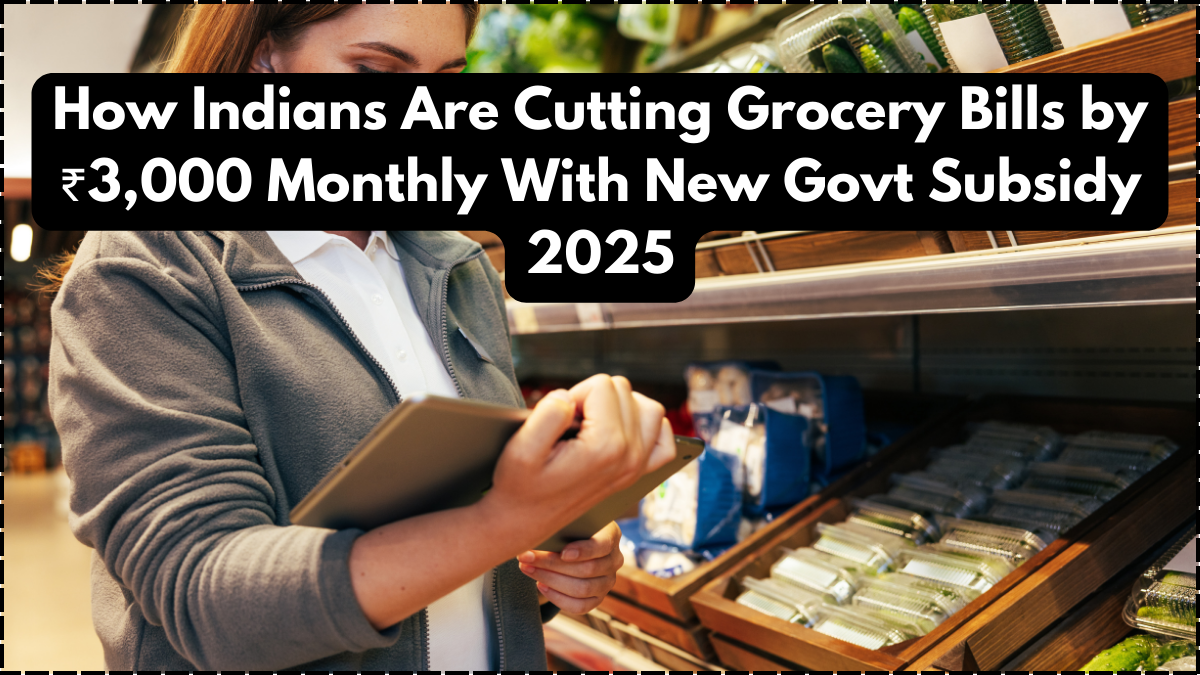In 2025, the Indian government introduced a comprehensive grocery subsidy aimed at alleviating the financial burden on households. This initiative is part of a broader strategy to enhance food security and promote economic stability. As a result, many Indians are now able to reduce their monthly grocery expenses by up to ₹3,000. This article delves into the details of the grocery subsidy, its impact on consumers, and the role of monthly savings schemes in further enhancing savings.

Understanding the Grocery Subsidy
The grocery subsidy introduced in 2025 is designed to provide direct financial assistance to eligible households, making essential food items more affordable. The subsidy is implemented through the Public Distribution System (PDS) and covers a range of staple commodities, including rice, wheat, pulses, and edible oils. By reducing the cost of these essential items, the government aims to ensure that low- and middle-income families can meet their nutritional needs without straining their budgets.
Impact on Household Budgets
The introduction of the grocery subsidy has had a significant positive impact on household budgets across the country. On average, families are saving approximately ₹3,000 per month on grocery bills. This reduction in expenses allows households to allocate funds to other essential areas such as healthcare, education, and savings. The subsidy has been particularly beneficial for families in rural areas, where access to affordable food has historically been a challenge.
Role of Monthly Savings Schemes
In addition to the grocery subsidy, various monthly savings schemes have been instrumental in helping households manage their finances more effectively. These schemes encourage regular saving habits and provide financial security. Popular options include:
- Post Office Monthly Income Scheme (POMIS): Offers a fixed monthly income with minimal risk.
- Recurring Deposit Accounts: Allow individuals to deposit a fixed amount monthly, earning interest over time.
- Systematic Investment Plans (SIPs): Mutual fund investments that promote disciplined investing.
By participating in these schemes, individuals can build a financial cushion, further enhancing their ability to save on grocery expenses.
Table: Comparison of Monthly Savings Schemes
| Scheme Type | Interest Rate | Lock-in Period | Ideal For |
|---|---|---|---|
| Post Office Monthly Income | 7.4% | 5 years | Risk-averse investors |
| Recurring Deposit | 5.8% | 1 year | Regular savers |
| Systematic Investment Plan | Varies | No lock-in | Long-term investors |
Conclusion
The grocery subsidy introduced by the Indian government in 2025 has proven to be a game-changer for many households, enabling them to save up to ₹3,000 monthly on grocery bills. Coupled with participation in monthly savings schemes, families are better equipped to manage their finances and improve their standard of living. As these initiatives continue to evolve, they play a crucial role in fostering economic stability and promoting financial well-being across the nation.
FAQs
What is the grocery subsidy introduced in India in 2025?
The grocery subsidy is a government initiative aimed at reducing the cost of essential food items for eligible households, implemented through the Public Distribution System.
How much can households save monthly with the new subsidy?
On average, households are saving up to ₹3,000 per month on grocery bills due to the subsidy.
What are some popular monthly savings schemes in India?
Popular schemes include the Post Office Monthly Income Scheme (POMIS), Recurring Deposit Accounts, and Systematic Investment Plans (SIPs).
How do monthly savings schemes help in managing finances?
These schemes encourage regular saving habits, provide financial security, and can offer returns that aid in offsetting living expenses.
Is the grocery subsidy available nationwide?
Yes, the subsidy is available across India, with distribution managed through the Public Distribution System to ensure equitable access.
Click here to know more.